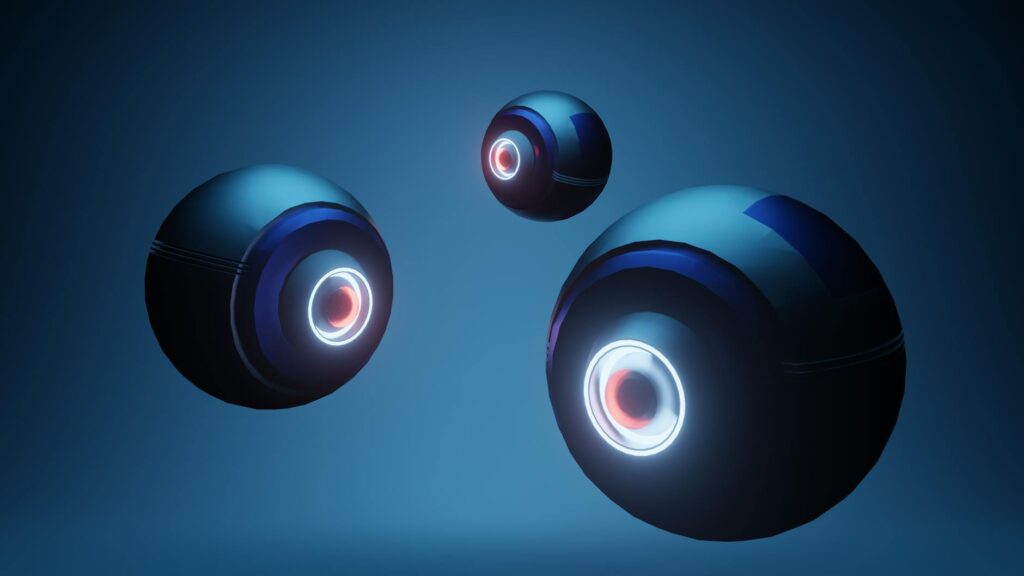Unlocking the Next Frontier: Why AI and Automation Are More Than Just Buzzwords
Let’s be honest. You hear the term AI and automation thrown around constantly. It’s in every business webinar, every tech headline, and every conversation about the future. It’s easy to dismiss it as just another piece of corporate jargon, a fleeting trend that doesn’t really apply to you. But that would be a massive mistake. This isn’t just about futuristic robots or sci-fi movie plots. It’s about a fundamental shift in how business is done, how decisions are made, and how we, as humans, work. This technology is here, it’s accessible, and it’s already creating a huge divide between companies that embrace it and those that get left behind. Forget the hype for a moment. What we’re really talking about is intelligence and efficiency on a scale never before possible.
Key Takeaways
- AI vs. Automation: Automation follows pre-set rules to perform repetitive tasks. AI, on the other hand, simulates human intelligence to learn, adapt, and make decisions. Their combination is what creates truly intelligent systems.
- Business Impact: AI and automation drive major benefits, including radical cost savings, enhanced customer personalization, and smarter, data-driven decision-making across all departments.
- The Future of Jobs: The focus is shifting from replacement to augmentation. AI will handle the mundane, freeing up human workers for more creative, strategic, and high-value tasks. This necessitates a focus on upskilling.
- Getting Started: Successful implementation doesn’t require a complete overhaul. The key is to start small with a high-impact, low-risk process, involve your team, and choose the right tools for your specific needs.
What’s the Real Difference? AI vs. Automation
Before we go any further, it’s critical to clear up a common point of confusion. People often use “AI” and “automation” interchangeably, but they’re two distinct concepts that work brilliantly together. Think of it like a recipe. Automation is the recipe card, and AI is the creative chef.
Automation: The Rule-Follower
At its core, automation is about making a system or process operate automatically. It’s based on a set of pre-programmed, explicit rules. If X happens, then do Y. It’s incredibly powerful for tasks that are repetitive, structured, and don’t require much, if any, judgment. It’s been around for decades.
- A factory robot arm that welds the same part in the same spot, thousands of time a day? That’s automation.
- An email marketing system that sends a “welcome” message the moment someone signs up? Automation.
- Your monthly bill payments that are automatically deducted from your bank account? You guessed it. Automation.
It’s fast, it’s consistent, and it eliminates human error in predictable tasks. But it’s not smart. It can’t handle exceptions or learn from experience. If a new situation arises that isn’t in its rulebook, it either stops or makes an error.
Artificial Intelligence (AI): The Decision-Maker
AI, on the other hand, is the brains of the operation. It’s a much broader field focused on building machines capable of tasks that typically require human intelligence. This includes things like learning, reasoning, problem-solving, perception, and language understanding. AI systems aren’t just following a static set of rules; they are designed to analyze data, identify patterns, and make predictions or decisions based on that analysis. They can learn and improve over time.
- Netflix recommending a new show based on your viewing history? That’s AI (specifically, machine learning).
- Your phone’s spam filter getting better at catching junk mail? AI is learning what you consider spam.
- A self-driving car navigating a busy street? That’s a highly complex AI system making thousands of real-time decisions.
When you combine the two, you get Intelligent Automation. This is where AI provides the decision-making power to a traditional automation process. The automation handles the “doing,” while the AI handles the “thinking.” An automated invoicing system (automation) could be enhanced with AI to read unstructured invoices, flag anomalies for fraud, and predict cash flow based on payment histories. That’s the powerful partnership we’re talking about.

The Tangible Impact of AI and Automation on Business
Okay, the theory is interesting, but what does this mean for the bottom line? The impact isn’t just incremental; it’s transformative. Companies that effectively implement AI and automation are not just doing things faster; they’re doing them smarter and unlocking entirely new capabilities.
Slashing Costs and Boosting Efficiency
This is often the most immediate and obvious benefit. Think about all the time your skilled employees spend on manual, repetitive tasks. Data entry, report generation, processing invoices, managing inventory—these are all perfect candidates for automation. Robotic Process Automation (RPA) tools, for example, are software “bots” that can mimic human actions to perform these tasks 24/7 without breaks or errors. The result? Your people are freed up to focus on strategic initiatives that actually grow the business. A major bank, for instance, automated over 85 back-office processes, freeing up thousands of hours and allowing them to handle a 20% increase in volume without hiring more staff. That’s real, measurable ROI.
Supercharging the Customer Experience
Today’s customers expect instant, personalized service. AI is the engine that makes this possible at scale. We’ve all dealt with frustrating, rule-based chatbots that can’t understand a simple question. But AI-powered chatbots are a world apart. They can understand natural language, access customer history, and resolve complex issues without human intervention. Beyond support, AI drives personalization. The product recommendations you see on Amazon or the curated playlists on Spotify are AI algorithms working to understand your preferences and deliver a tailored experience. This builds loyalty and dramatically increases customer lifetime value.
Unlocking Data-Driven Decisions
Most companies are sitting on a goldmine of data they don’t know how to use. AI and machine learning algorithms can sift through massive datasets—sales figures, customer feedback, market trends, operational metrics—to uncover insights that would be impossible for a human analyst to find. This moves decision-making from gut feeling to data-backed strategy. Predictive analytics can forecast future sales trends with surprising accuracy, identify at-risk customers before they churn, or even predict when a piece of machinery will need maintenance before it breaks down. It’s like having a crystal ball, but one that’s powered by data.
The goal isn’t just to do the same tasks faster; it’s to uncover entirely new ways of operating and creating value. AI provides the insight, and automation provides the execution.
Navigating the “Will Robots Take Our Jobs?” Question
Let’s tackle the elephant in the room. The fear that automation and AI will lead to mass unemployment is pervasive, and it’s not entirely unfounded. Some jobs, particularly those that are highly repetitive and predictable, will be automated. That’s a fact. But history has shown us that technological revolutions don’t just eliminate jobs; they transform them and create entirely new ones.

The narrative is shifting from replacement to augmentation. Think of AI as a copilot, not an autopilot. A radiologist might use an AI to scan thousands of medical images and flag potential anomalies, allowing the doctor to focus their expert eye on the most critical cases. A lawyer might use AI to instantly analyze thousands of legal documents for precedent, a task that would have taken weeks. In both cases, the technology isn’t replacing the professional; it’s amplifying their skills and allowing them to perform at a higher level.
The real challenge isn’t stopping automation; it’s preparing for the transition. The future of work will place a higher value on uniquely human skills: creativity, critical thinking, emotional intelligence, and complex problem-solving. This means a massive societal and corporate focus on upskilling and reskilling is not just important—it’s essential. We will see the rise of new roles like AI ethicists, automation strategists, and human-machine interaction designers. The jobs of the future will be about working alongside intelligent systems, not competing against them.
Getting Started: A Practical Roadmap for Implementation
The idea of implementing AI can feel overwhelming. It sounds expensive, complicated, and reserved for tech giants. But that’s no longer the case. With the rise of cloud computing and SaaS (Software as a Service) platforms, powerful AI and automation tools are within reach for businesses of all sizes. Here’s how to approach it.
Start Small, Think Big
Don’t try to boil the ocean. The biggest mistake companies make is trying to launch a massive, company-wide AI initiative from the get-go. The key is to find a “low-hanging fruit” project. Look for a process that is:
- Rule-Based and Repetitive: The task follows a clear, definable logic.
- High-Volume: It happens often enough that automating it will save significant time.
- Prone to Human Error: A process where mistakes are common and costly.
A perfect example is employee expense reporting. It’s a universal pain point, full of manual data entry and prone to errors. Automating this single process can provide a quick win, demonstrate the value of the technology, and build momentum for more ambitious projects down the road.
Choose the Right Tools for the Job
The market for automation tools is vast. There are RPA platforms like UiPath and Automation Anywhere for task automation, intelligent document processing (IDP) tools for extracting data from PDFs and images, and all-in-one AI platforms from major cloud providers like Google, Amazon, and Microsoft. Don’t get bogged down by the options. Start with the problem you identified in the previous step and then look for the simplest tool that can solve it effectively. Often, a simple off-the-shelf solution is far better than a complex, custom-built system for your first project.
Involve Your Team from Day One
Technology doesn’t implement itself. People do. The human element is the most critical and most often overlooked part of any automation strategy. If your employees see automation as a threat, they will resist it. It is crucial to be transparent about your goals. Frame the initiative as a way to eliminate the boring, frustrating parts of their jobs so they can focus on more interesting and valuable work. Provide training, create a space for feedback, and celebrate your early successes together. Turn your team into champions of the change, not victims of it.

The Future is Intelligent and Automated
We are just at the beginning of this transformation. The technologies underpinning AI and automation are advancing at an exponential rate. Concepts like “hyperautomation,” where organizations rapidly identify and automate as many business processes as possible, are becoming the norm for industry leaders. We’re seeing AI contribute to creative endeavors, accelerate scientific breakthroughs, and solve some of the world’s most complex problems.
This isn’t a single event; it’s an ongoing evolution. Embracing AI and automation isn’t about buying a piece of software. It’s about cultivating a mindset of continuous improvement, data-driven curiosity, and human-centric innovation. The companies that thrive in the coming decade will be those that learn to build a seamless partnership between human talent and artificial intelligence, using each to unlock the full potential of the other.
Conclusion
The fusion of AI and automation represents one of the most significant business transformations of our time. It’s far more than a tool for cutting costs—it’s a catalyst for innovation, a driver of superior customer experiences, and a powerful amplifier of human potential. By understanding the core concepts, focusing on augmentation over replacement, and taking a strategic, people-first approach to implementation, you can move beyond the buzzwords and begin harnessing this incredible technology to build a more efficient, intelligent, and resilient business for the future.
FAQ
Is AI and automation only for large corporations?
Absolutely not. While large enterprises were early adopters, the rise of cloud-based SaaS solutions has made powerful AI and automation tools incredibly accessible and affordable for small and medium-sized businesses (SMBs). Many platforms offer scalable, pay-as-you-go models that don’t require massive upfront investment in infrastructure or specialized teams.
What is the biggest mistake companies make when implementing automation?
The most common mistake is focusing exclusively on the technology while ignoring the people and process. A successful automation project requires strong change management. You must communicate the ‘why’ behind the change, involve employees in the process, provide adequate training, and redesign workflows around the new, automated reality. Simply dropping a new tool on a team without this support is a recipe for failure.
How do I know which process to automate first?
Look for the ‘Four R’s’: Repetitive, Routine, Rules-based, and ROI. Identify tasks that are performed frequently in the same way, follow a clear set of rules, and take up a significant amount of employee time. Calculating the potential time savings and reduction in error rates will help you identify the processes with the highest potential Return on Investment (ROI) to tackle first.



 AI in Healthcare: How It’s Changing Medicine Forever
AI in Healthcare: How It’s Changing Medicine Forever  AI and Big Data: The Ultimate Power Couple Explained
AI and Big Data: The Ultimate Power Couple Explained  Build AI-Powered Apps: Your Ultimate 2024 Starter Guide
Build AI-Powered Apps: Your Ultimate 2024 Starter Guide  Deep Learning Breakthroughs: The AI Revolution Explained
Deep Learning Breakthroughs: The AI Revolution Explained  How AI is Revolutionizing Modern Agriculture
How AI is Revolutionizing Modern Agriculture  Top Natural Language Processing Applications Explained
Top Natural Language Processing Applications Explained  AI and Blockchain: A Powerful Tech Synergy
AI and Blockchain: A Powerful Tech Synergy  Get a Job in Blockchain: Your 2024 Web3 Career Guide
Get a Job in Blockchain: Your 2024 Web3 Career Guide  Wallet Types Explained: Hot vs Cold & More (2024 Guide)
Wallet Types Explained: Hot vs Cold & More (2024 Guide)  How Venture Capital is Shaping the Crypto Industry
How Venture Capital is Shaping the Crypto Industry  Sentiment Analysis for Crypto: A Trader’s Ultimate Guide
Sentiment Analysis for Crypto: A Trader’s Ultimate Guide  NFTs: The New Key to Membership & Brand Loyalty | Guide
NFTs: The New Key to Membership & Brand Loyalty | Guide